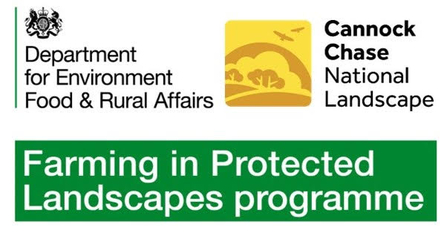We’re really excited to begin restoring this site. It’s a fantastic opportunity for people to help make a big difference to wildlife in the local area. Over coming years, a combination of grazing and hands-on clearance of scrub and bracken will stop it encroaching the heather and bilberry. We’ll also create bare sandy areas, perfect for invertebrates to burrow in and use as hunting ground.Staffordshire Wildlife Trust
Volunteer to help restore rare habitat and bring wildlife back
The charity has taken on the lease of 25 hectares of internationally important lowland heath from Forestry England. The land is located either side of Penkridge Bank Road near ‘The White House’ and once restored, will connect together Brindley Heath and Sherbrook Valley. Over the coming years, the Trust’s work will open up the wildlife corridor, allowing various birds, reptiles, and invertebrates to move easily across the heathland landscape.
A new volunteer work party is launching, giving local people the chance to help heathland habitat to thrive here once again.
The first volunteering session takes place on Wednesday 7 August, between 10.30am and 3pm. Sessions will run on the first Wednesday of every month, with a focus on reducing scrub and bracken. They’re a great opportunity to keep fit, learn new skills, meet new people and have fun working outside.
The charity is also running a series of guided walks so that those interested can learn more about the planned work to restore the area. These walks will last around two hours and take people around one area of the site. The first walk will be on Wednesday 14 August, between 10.30am and 12.30pm.
In addition to the practical conservation work, the Trust will also introduce cattle to gently graze enclosed areas once the old fencing has been repaired. Grazing will reduce the quicker growing grasses and the cattle will trample the bracken, giving the smaller low growing plants like bilberry and heather chance to flourish. This will create a mosaic of different plants and small micro habitats, perfect for the small invertebrates that make Cannock Chase their home.
Hayley Dorrington, Senior Heathlands Officer, at Staffordshire Wildlife Trust said:
“We’re really excited to begin restoring this site. It’s a fantastic opportunity for people to help make a big difference to wildlife in the local area. Over coming years, a combination of grazing and hands-on clearance of scrub and bracken will stop it encroaching the heather and bilberry. We’ll also create bare sandy areas, perfect for invertebrates to burrow in and use as hunting ground.
“No conservation experience is necessary to volunteer with us, we’ll guide you and provide all the tools. There are always new facts to learn, good camaraderie, and biscuits for break time.”
“The work we are doing is being funded through the Defra funded Farming in Protected Landscapes programme, which is designed to support farmers and landowners within the Cannock Chase National Landscape to carry out projects that support nature recovery, mitigate the impacts of climate change, provide opportunities for people to discover, enjoy and understand the landscape and cultural heritage, or support nature-friendly, sustainable farm businesses.”
The National Landscape Partnership is the body that exists to protect this special place. This partnership is made up of local authorities, interest groups, national agencies and local communities, all of which are committed to ensuring that Cannock Chase remains a healthy, living landscape for future generations. For further information about Cannock Chase visit www.cannock-chase.co.uk
Staffordshire has unfortunately lost more than 90 percent of its heathland habitat over the decades. Cannock Chase has the largest surviving area of lowland heathland in Central England, and is home to a range of plants and animals including common lizards, solitary bees, stone chats and tree pipits.
Those interested in volunteering can register via the Trust’s website: bit.ly/cannockchasevolunteering
To book a place on one of the guided walks please visit www.staffs-wildlife.org.uk/events and search ‘Cannock Chase’.




